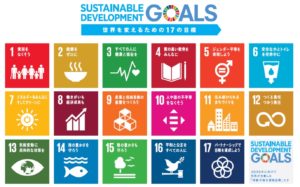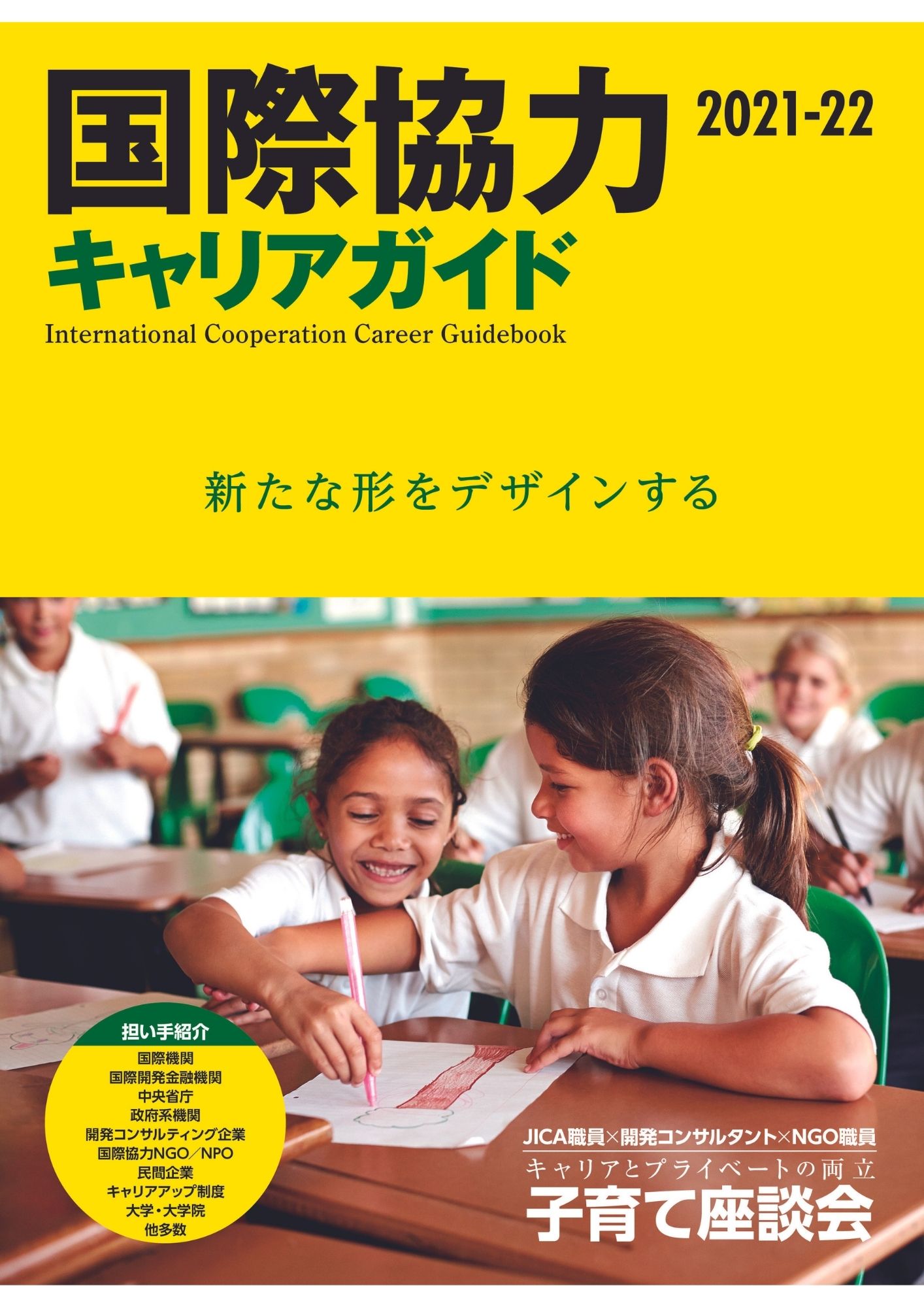picture:The National Diet Building ©The International Development Journal Co., Ltd.
IDJ ENGLISH
『International Development Journal』2020 April edition
Maintained increase for 5 consecutive years
The General Account Budget for ODA of Japan’s government in FY2020 is 0.86% higher than the previous year at 561 billion yen. It has been increasing for five consecutive years. Relieved voices of officials in charge of ODA can be heard.
The Japanese government’s overall budget for FY2020 had a general account expenditure of 102,658 billion yen, exceeding the initial budget of 100 trillion yen for the second consecutive year. With the aging of society, social security expenditures are increasing, and reconstruction from natural disasters such as recent floods and large typhoons has continued. Under such circumstances, ODA budgets have continued to increase. This can be said to have provided some indication of appreciation for ODA’s past performance.
The following three roles of ODA are emphasized. One is the promotion of the “Free and Open Indo-Pacific (FOIP) ”, including the promotion of “high quality infrastructure” exports. The second is the expansion of pro-Japanese and intellectual groups through JICA development graduate school collaboration. The third is addressing global challenges such as the Sustainable Development Goals (SDGs).
In particular, there are many questions this year as to how seriously we will tackle the SDGs, which are 10 years away from the target year 2030. Some targets, such as the SDGs target 6.6 for ecosystem protection and recovery related to water, have deadlines set this year, 2020. In addition, international conferences on SDGs will be held in Japan, including the Asia-Pacific Water Summit, Nutrition Summit, and the international conference on the promotion of marine plastic waste management.
Under such circumstances, the Japan International Cooperation Agency (JICA) is trying to play a role as a “platform for achieving the SDGs” through organizational restructuring. Government ministries and agencies, including the Ministry of Foreign Affairs, are actively developing projects that can achieve the SDGs with ODA and non-ODA budgets. For example, the Ministry of the Environment has been implementing the “City-to City Collaboration Program for a Low-Carbon Society” since 2013. How should these efforts be combined into one major impact? Further cooperation beyond the ODA framework is needed.
Cooperation with the use of STI
In order to realize SDGs, promoting Science and Technology Innovation (STI) is an important factor. Last year, JICA set up an Innovation and SDGs section in their Planning Department and STI section in the Infrastructure Management Department. It is also necessary for Japan to accelerate “STI Diplomacy”.
STI Diplomacy uses its own science and technology to enhance its presence in the international community and to strengthen bilateral relations. For example, Japan’s ODA includes the Science and Technology Research Partnership for Sustainable Development (SATREPS). In the world, Europe and the United States began promoting science and technology diplomacy around 2000. Japan also set up a post of Science and Technology Adviser to the Minister of Foreign Affairs in 2015, when the SDGs were launched. In recent years, as expectations for STI have increased in response to global issues, there is gathering momentum to utilize Japan’s science and technology to build new relationships with developing countries and emerging countries, including ODA graduated countries.
Under such circumstances, Teruo Kishi, a Professor Emeritus of the University of Tokyo, who served as the first Science and Technology Advisor to the Minister of Foreign Affairs, emphasizes the importance of collaboration as a future task. “It is necessary to form a network that includes the Ministry of Foreign Affairs and government ministries, research institutes, business circles and academia on science and technology diplomacy. It is not enough right now.”
He also argued that coordination with other countries would be an issue, saying that “strengthening coordination with the United States and Europe is essential, and how will it be with China?” He also said, “Science cooperation is the creation of universal knowledge and there is no objection to global cooperation. However, there are risks for cooperation such as intellectual property rights, technology leaks and security issues. It is necessary to take countermeasures at the same time amid such global cooperation.”
Kishi said, “In the case of technical cooperation, ‘the way of getting together’ has no impact. After finding a key person in the science and technology diplomacy of the partner country, such as Science and Technology Advisor to the Minister of Foreign Affairs like me, and building trust, it is important to develop the cooperation. In other words, a strategy of “breaking through one point” to achieve full expansion is effective.
However, this strategy is not readily available in Asia and Africa, where there are many countries. Kishi said, “In the Association of Southeast Asian Nations (ASEAN), it is difficult to identify the proper key persons. Indonesia stands at the central position. On the other hand, there are developing countries such as Cambodia and Myanmar and developed countries such as Singapore. So it is not easy to organize them with each other. ”
As for the role of ODA, human resource development and collaboration in joint research such as SATREPS have bigger needs from developing and emerging countries. Kishi said, “Especially in Africa, it is very important to create engineering universities and research institutes, and also to package and support industrial development. These countries are also eager to research cutting-edge technologies. It is necessary to think about how to organize developing, emerging and developed countries to work together with such cutting-edge technologies”.
Increase in female and overseas researchers
At present, Japan’s science and technology is still highly valued around the world. However, some people are worried about a decline in science and technology in the future due to a decrease in the number of research personnel due to a declining birthrate and aging population.
“The solution is to increase the number of researchers. The only solution is to increase the number of female researchers or to attract foreign researchers to Japan. The number of papers published by Japanese universities has also declined and the declining international rankings of Japanese universities have also influenced Japan’s innovation power. Although all universities are working hard, they merely look on with their arms folded without trying to change the current framework. It is necessary for the government to go beyond the existing framework, such as setting up a quota system for foreign researchers at each university with a drastic budget. We want to use ODA and other means to attract more good students from Africa and other countries”.
The role of ODA, such as policy for the SDGs, the promotion of Science and Technology Innovation Diplomacy and the acceptance of foreigners, is becoming increasingly diverse. In order to respond flexibly to these issues, further reforms are required, not only in JICA but also in ODA as a whole, such as institutional reform and management improvements in the development business community. (Saki Kawata)
*****以下、日本語原文*****
ODA予算特集
SDGs達成への本気度問われる一年か 日本の“科学技術力”の向上も課題
5年連続で増加を維持
2020年度の政府開発援助(ODA)の一般会計予算案は前年度比0.8%増の5,610億円となり、5年連続の増加となった。関係者からは安堵の声が漏れた。
日本政府全体の20年度予算案は、一般会計の歳出総額が102兆6,580億円となり、当初予算では2年連続で100兆円を突破した。進む高齢化に伴い社会保障費は増大しており、近年相次いで起きた洪水や大型台風などの自然災害からの復興も続いている。そうした状況の中でも、ODA予算は増加傾向を維持した。これは、ODAのこれまでの実績への評価がある程度示されたと言ってもいいだろう。
ODAは20年度も引き続き、大きく分けて次の3つの役割が重視されている。一つは「質の高いインフラ」輸出の促進を含めた「自由で開かれたインド太平洋」(FOIP)の推進、もう一つはJICA開発大学院連携などを通じた親日派・知日派の拡大、さらにもう一つが持続可能な開発目標(SDGs)など地球規模の課題への対処だ。
中でも今年度は、目標年まであと10年となったSDGsにどこまで本気で取り組むか、その姿勢が問われる機会が多くありそうだ。というのも、生態系の保護・回復を掲げるSDGsのターゲット6.6のように、いくつかのターゲットの期限は今年に設定されている。加えて、日本ではアジア・太平洋水サミット、栄養サミット、海洋プラスチックごみ対策促進支援に関する国際会議など、SDGsの課題に関する国際会議が相次いで開催される。
そうした状況の中で、国際協力機構(JICA)は組織再編を通じて“SDGs達成に向けたプラットフォーム”としての役割を発揮しようとしている。外務省含めた各省庁も、ODA・非ODA予算でSDGs達成にもつながる事業を積極展開している。例えば環境省は、「低炭素社会実現のための都市間連携事業」を2013年から実施している。個々で実施されているこうした取り組みをどう取りまとめ、一つの大きなインパクトにしていくか。ODAの枠組みを超えたさらなる連携が必要だ。
STI活用でもカギは“連携”
科学技術外交は、自国の科学技術力を用いて国際社会での存在感を高めたり二国間の関係強化を図ったりするもので、日本のODAでは地球規模課題対応国際科学技術協力プログラム(SATREPS)がその一つとなっている。世界では欧米などが2000年頃から科学技術外交を推進し始め、日本もSDGsが採択された2015年に外務大臣科学技術顧問を設置し、本格的に動き出した。近年は地球規模課題への対応にSTIへの期待が高まる中、開発途上国やODA卒業国含めた新興国などとの新たな関係構築を進める上で、日本の科学技術力を生かそうという機運はますます高まりつつある。
そうした中で、初代外務大臣科学技術顧問を務めた岸輝雄東京大学名誉教授は、今後の課題として連携の重要性を強調する。「外務省が中心となり、科学技術外交に関する府省、研究機関、経済界やアカデミアを含んだネットワーク形成が必要だ。今はまだ十分でとは言えない」。さらに同氏は、他国との連携も課題に挙げ、「米国、欧州との連携強化は必須、かつ中国とどのようにつきあうか」とも語る。その中では、「科学技術協力のうちの科学の協力は、“普遍的な知の創造”であり、世界的に連携して取り組むことに異存はない。しかし技術の協力は、例えば知的財産権や技術流出、安全保障問題上の問題などのリスクもあり、連携と同時に対策を講じる必要はある」と、その難しさも示唆した。
岸氏は、「技術の協力の場合は“何となく付き合う”では成果はでない。例えば私のような外務大臣科学技術顧問といった相手国の科学技術外交のキーパーソンを見つけて,信頼を築いてから実際の協力を進展させる。すなわち“一点突破”して全面展開を図るといった戦略が有効ではないか」と提案する。ただ、この戦略は国数も多いアジアやアフリカではなかなか手が回らない。「東南アジア諸国連合(ASEAN)はキーパーソンが分かりにくい。インドネシアが一応中心になっているが、カンボジアやミャンマーなどの開発途上国、シンガポールのような先進国が揃っていて、それらをどうつなげるかが難しい」(岸氏)という。
ODAの役割としては、人材育成やSATREPSのような共同研究での連携が、開発途上国や新興国からのニーズが高いという。岸氏は、「特にアフリカは、工学系の大学や研究所を作り、それに産業育成に向けた支援もパッケージ化した支援といったものが非常に重要になってくる。共同研究においては開発途上国も新興国も、最先端の技術の研究をやりたがる傾向にある。最先端技術で途上国・新興国・先進国が一緒にどう連携していくか、考えていく必要があるだろう」と指摘する。
女性・海外研究者を増やせ
現状、日本の科学技術力はまだ世界で高く評価されている。しかし、少子高齢化に伴う研究人材の減少などを背景に、将来的な科学技術力の低下を懸念する声はある。岸氏は、「解決策は研究者の数を増やすこと。それには女性研究者を増やすか、外国から研究者を呼んでくるしかない。また、日本の大学が発表する論文の数が減少していることや大学の国際ランキングが落ちてきていることも、日本のイノベーション力に影響を与えている。どの大学も頑張ってはいるが、現行の枠組みを変えずに手をこまねいているようだ。政府が思い切って予算をつけて各大学に外国人研究者枠を設けるなど、既存の枠組みを超えたことをやる必要がある。ODAなども活用し、アフリカなどから良い学生をもっと呼んでほしい」と主張する。
SDGsを含め、こうした科学技術外交の推進や日本の外国人受け入れへの対応など、ODAの役割はますます多様化している。これらに機動的に対応していけるよう、JICAだけでなくODA全体で制度改善や開発業界の経営改善などさらなる改革が求められている。(編集部・川田沙姫)
『国際開発ジャーナル』2020年4月号掲載記事

国会議事堂202004-300x225.jpg)



